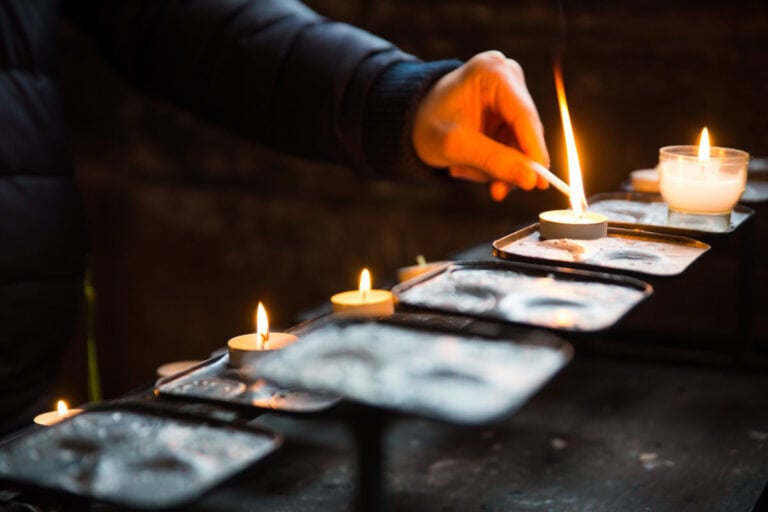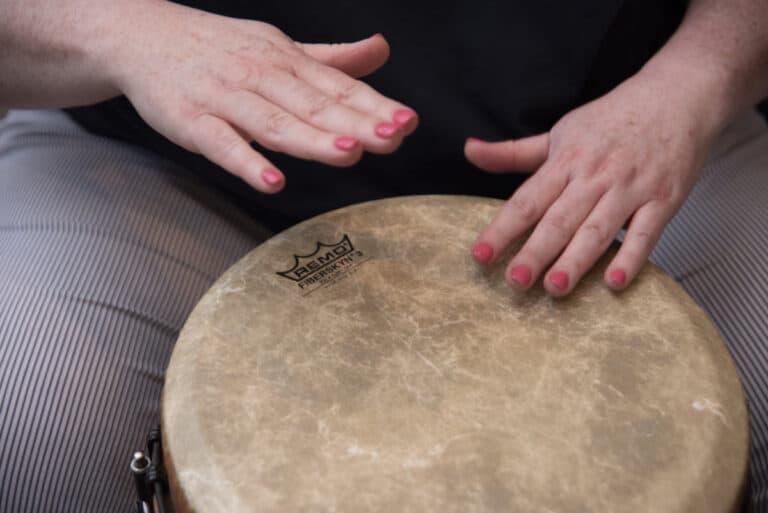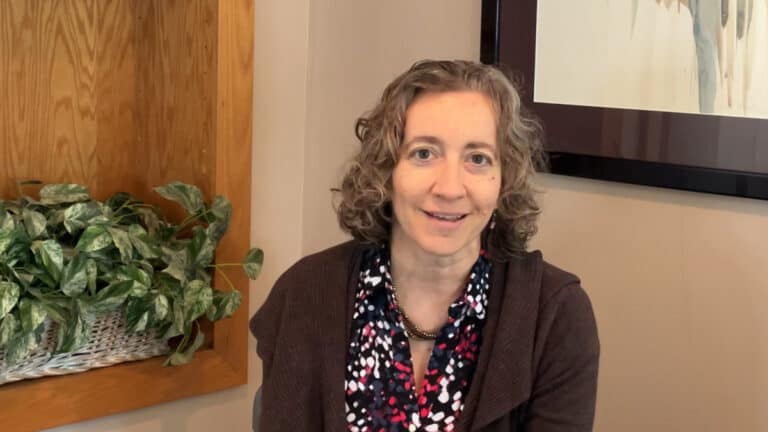Serving as a liturgical ensemble musician requires working together to create music that supports the sung prayer of the entire assembly. That means listening and making intentional choices so that many different sounds become one unified song. Whether you’re a vocalist, guitarist, flutist, pianist, or other instrumentalist, the following tips for ensemble musicians offer practical ways to improve your musicianship and better support the assembly in sung prayer.
1. Music theory is your friend
Everyone’s musical journey is different. Some liturgical musicians have extensive theory knowledge, while others learned how to play an instrument without ever learning the theory behind what’s on the page. If you fall into the latter group, learning some basics of music theory — chord structure, intervals, how to create good harmonies, etc. — will enhance your ensemble skills and make it easier to blend with those around you.
2. Know the building blocks
There are three key elements in music: melody, harmony, and rhythm. When every player in an ensemble understands those things and their role in creating them, beautiful music can happen. Obbligato instruments, especially strings or woodwinds, are a great option to take the melody or create harmony. Guitars and percussion can provide the foundational rhythm for the song. The piano can do a little bit of everything, but it doesn’t always need to when playing in an ensemble.
3. Listen to each other and avoid duplication
Good ensemble playing means really listening to each other and not playing what someone else is playing. If a flute player has the melody, let the guitars focus on rhythm while the piano adds some harmony. Decide who will play what during rehearsal and take good notes so you remember the arrangement when it comes time for liturgy, but also be ready to respond in real time and adjust if needed.
4. Use the intro to provide the tempo and tune
The introduction of a song helps prepare the assembly to sing by giving them the tempo and part of the tune. While many accompaniment books have a suggested intro, there may be times you need to adjust that intro or create your own. Be sure the melody line is clear so the assembly can easily recognize the song and know when to come in. Start and end on the tonic, if possible, or finish with a strong dominant 7th chord.
5. Let the assembly hear their own voice
The most important sound in liturgy isn’t the ensemble — it’s the voice of the assembly. Make sure you leave space in the music for the assembly to hear their own voice as they engage in full, conscious, and active participation in the liturgy. While an obbligato instrument is a great option to provide the melody in the intro, they don’t need to stay on melody once the assembly begins to sing. For familiar hymns, consider using an a cappella verse or refrain that centers the voice in sung prayer.
6. Adjust octaves with multiple instruments
If multiple instruments are covering the same range, the sound can quickly get muddy. Pianists can shift an octave higher or simplify their right hand when playing with guitar or simplify their left hand if the ensemble includes a bass. If both organ and piano are playing together, be sure to adjust octaves and play different parts to keep the sound balanced. Being aware of the register of other instruments and making small adjustments can make a big difference.
7. Use different styles with multiple guitarists
Many liturgical ensembles have multiple guitarists, which means variety is your friend. Just as you don’t want a piano and guitar playing in the same sound range, you don’t want multiple guitars playing the same thing. Try different capo positions to vary the sound or have one person strum while another plays fingerstyle. Depending on the number of guitars, you may simply need one guitarist to sit out for certain songs.
8. Not everyone needs to play every verse
As liturgical musicians, we want to contribute, but not every person needs to play every line of every piece. Variety is what makes ensemble music interesting. Start with fewer instruments and gradually add more with each verse or use all instruments on the refrain but scale back on the verse. Pay attention to the text and the flow of the liturgy to decide when to hold back and when to build.
9. Use a lead sheet for keyboard if playing with guitar
Keyboard accompaniments and guitar chords are often written as stand-alone versions, which can feel overwhelming or even clash when combined. When piano and guitar play together, the piano can switch to using a lead sheet or simplify from the written keyboard accompaniment. A simple lead sheet with melody and chords can help give everyone the same starting point, and then the group can decide who will lead and who will embellish.
10. Pick one instrument to lead
An ensemble is a group of musicians working together as a unified whole, but someone needs to take lead. That doesn’t mean the other instruments are less important, and who is leading might change from one song to another in the same liturgy. Identifying a lead instrument simply recognizes that having a clear leader helps keep the group together.
As liturgical musicians, we are called to bring many parts together as one unified whole. Embracing these tips for ensemble musicians helps ensure quality music that supports the assembly in full, conscious, and active participation in the liturgy.
Adapted from a presentation given by Kathleen M. Basi and Orin Johnson at our CLEF St. Louis Ensemble Workshop.
Kathleen M. Basi is an award-winning author, liturgical composer, and storyteller. Her song, “Come, All You Thirsty,” won the Association of Catholic Publishers’ 2022 Song of the Year. She is a published novelist who travels around the country giving parish retreats and storytelling-musical events.
Orin Johnson is director of music and liturgy at St. Margaret of Scotland Parish in St. Louis, Missouri. He is an accomplished liturgical composer and performer, and his writings on music and liturgy have been published Twenty-Third Publications, GIA Quarterly, Liguori, Liturgical Press, and NPM Pastoral Music.
Copyright © 2025 Catholic Liturgical Ensemble Formation
Looking for more resources? Search our full online library of CLEF Life resources, or sign up for CLEF Life email updates to receive the latest resource in your inbox once a week.



